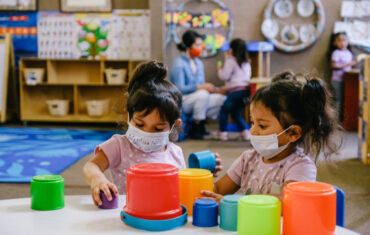The decision to require disposable mask in the workplace would depend upon an analysis of the work environment. OSHA categorizes and defines employee risk of coronavirus exposure at work into four categories. They include very high, high, medium, and lower risk. The level of risk depends on their potential exposure to those infected with the virus.
4 levels of risk
Very high risk occupations with high exposure to known or suspected sources of the virus. They are also laboratory employees handling specimens of known or suspected patients. Next, high exposure risk occupations with a high potential for exposure to known or suspected sources of the virus. These include healthcare employees and support staff, morgue and mortuary employees. Medium exposure risk occupations are those that have frequent, close contact with known or suspected sources. This would include employees in schools for instance, who should use disposable mask. Finally, lower exposure risk occupations that do not require contact with people known to be infected. They also close contact with the public. Office employees with limited contact with the general public or other coworkers would be in this category.
Therefore, an analysis of the risk associated in the workplace is essential in using disposable mask. In many instances, people in very high and high exposure occupations should use a respirator for protection.
The role of disposable mask
For the other levels of occupations, education is key. The most important thing to know is what disposable masks can and cannot do. We use disposable masks as a physical barrier to protect employees from hazards. It can trap the body fluid that may contain the virus through the limitation of exposure to secretions and body fluids. However, disposable masks don’t seal tightly. This may leave gaps and thus loses any filtration, it may provide to keep out airborne particles.
Education employees
According to OSHA, there is limited information on the value of disposable masks to prevent the spread of virus. Because there is no known source of infection. The bottom line – educate your employees on good hygiene practices. This is the best defense in the workplace to reduce the spread of infection. Besides, they should use hand washing frequently, use disposable mask, proper sneezing, and cleaning of work surfaces. These will provide many of the necessary protections in the workplace. If there is someone infected in the workplace, wearing disposable mask is a good small step in protection.
Properly using and caring for disposable masks are essential to their effectiveness. The CDC notes that disposable mask should cover the mouth and nose. People should wear disposable mask under the chin and fit snugly on all sides. Besides, it’s important to wash your hands before putting on disposable mask and after removing it. Last but not least, isolation and social distancing is a more effective control strategy in the workplace. This enforce to eliminate occupational exposure.






